Taraxacum officinale - Common Dandelion
Phylum: Magnoliophyta - Class: Equisetopsida - Order: Asterales - Family: Asteraceae
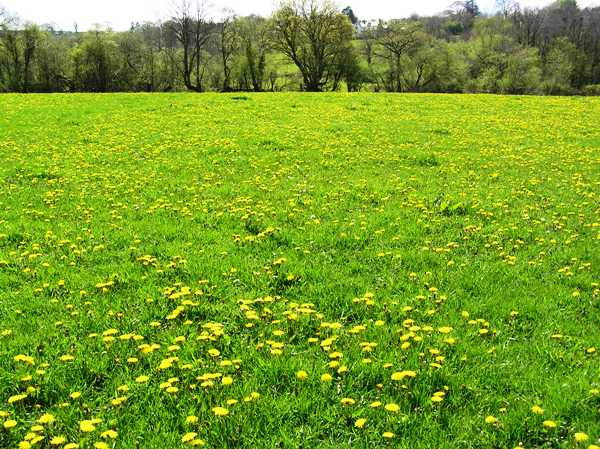
Description
Dandelions produce numerous very small yellow florets gathered together in a composite flower head upon a hollow stem or scape that releases a milky latex when cut or broken. The lobed leaves, up to 25 cm long, form a basal rosette above a long tapering taproot. A plant may support one or several flowering stems. Flower heads, deach typically 2 to 5cm across, open during the day and close up at night.
Distribution
The Common Dandelion Taraxacum officinale is common and widespread throughout the UK, Ireland and much of Europe; it is the type species of the large and difficult to disentangle Taraxacum genus.
Flowering times
In April, Dandelions dominate much of the the landscape in Britain and Ireland, but a few specimens can usually be found in flower in every month of the year.
Etymology
The genus name Taraxacum is thought to come from the Arabic word for a bitter herb. Plants were given the specific epithet officinale when they had a 'official' use in medicine/pharmacoligy. The common name Dandelion refers to the shape of the flower rays, like a lion's teeth: 'dents de lion' in French.
Uses
There are many myths and mysteries about dandelions, including the belief that picking them will cause incontinence. The leaves are sometimes used as a salad vegetable and the flowers are used in making dandelion wine.
There are a great many sub-species of dandelions, and many other plants are mistakenly given this name. From a distance, people sometimes mistake the many species of hawkbits for dandelions. True dandelions have hollow stems and, when picked, bleed a milky liquid.
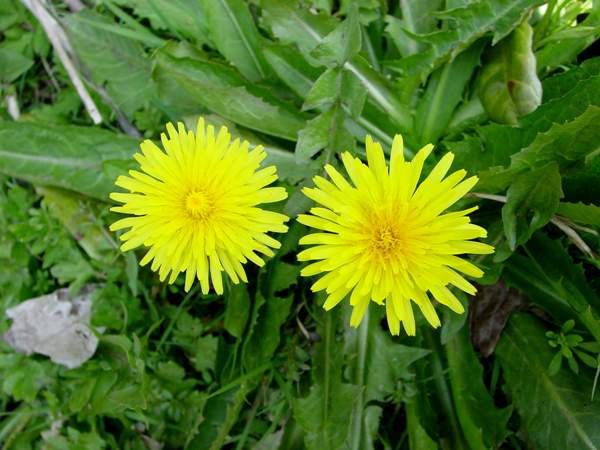
Above: The familiar bright yellow flower and dark green jagged leaves of the Common Dandelion.
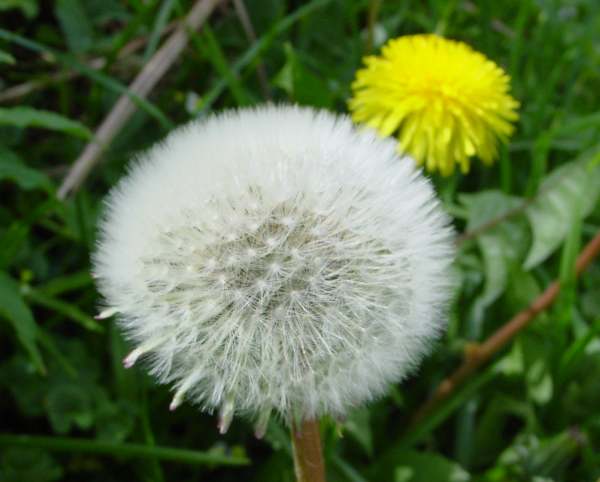
Dandelion 'clocks' comprise the many seeds of this composite flower, with their downy parachutes that travel great distances on even the lightest of summer breezes. The seeds are particularly attractive to Goldfinches.
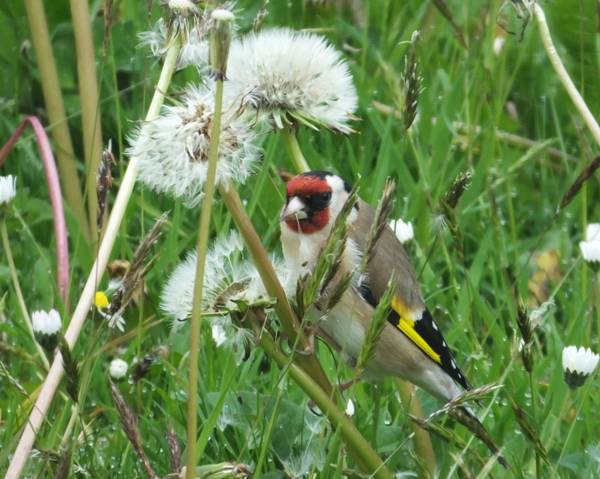
Children still play the game of blowing at the seed heads, and they claim to determine the hour of the day by the number of blows required to disperse the seeds.
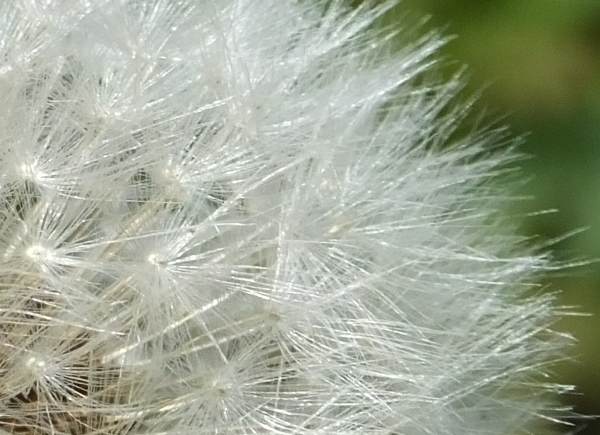
The flowers shown on this page were photographed in West Wales between April and June.
Sue Parker's latest ebook is a revised and enlarged second edition of the acclaimed Wildflowers in the Algarve - an introductory guide. Full details here...
Buy it for just £3.95 on Amazon...
Please Help Us: If you have found this information interesting and useful, please consider helping to keep First Nature online by making a small donation towards the web hosting and internet costs.
Any donations over and above the essential running costs will help support the conservation work of Plantlife, the Rivers Trust and charitable botanic gardens - as do author royalties and publisher proceeds from books by Pat and Sue.



